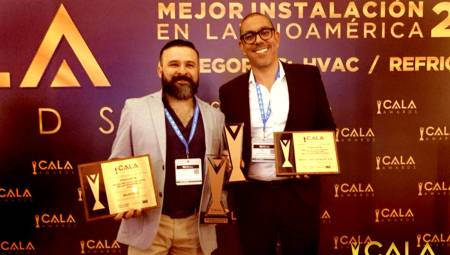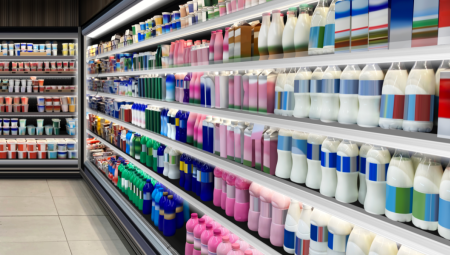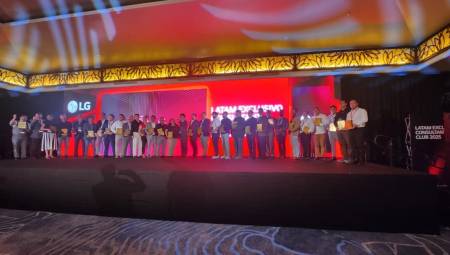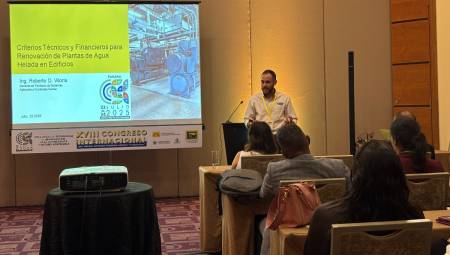Imagine living in a house where the natural temperature is comfort almost all year round; where it is possible to take a shower without spending a drop of energy 80% of the time. These houses exist, and in a not too distant period it is intended to be the norm. The European Union is preparing a directive proposing that the energy of public buildings be neutral by 2015 and in all buildings five years later. It is about bringing buildings as close as possible to the so-called passive constructions: built taking advantage of the climate to optimize ventilation, with solar panels and collectors that take advantage of the heat of the sun to generate energy and heat the air and water.
Rosario Heras, coordinator of the energy efficiency area of CIEMAT (Center for Energy, Environmental and Technological Research), has been working in this area since 1986. "When I started they told me I was crazy." Although that has been more than twenty years ago, it has been in the last two or three years when it has become "fashionable", experts say. Now, in order for a change of fact to take place, regulations are being introduced: in 2006 the Technical Building Code (CTE) came into force; forces to build according to principles of sustainability. The Energy Efficiency Law being prepared by the Government (currently in draft) will also introduce new requirements to reduce indiscriminate energy consumption.
At the moment, in Spain there is no registry of bioclimatic or passive houses, and the estimates are very different. Margarita de Luxán, an architect specialized in bioclimatics, has built 515 homes of this class and has another 73 in the pipeline. Luxán affirms that already in the seventies there were some passive houses, and in 2000, when the First Exhibition of Environmental Architecture: Bioclimatic, Ecological and Sustainable was held, 50 were selected, among a multitude of projects, totaling more than 400 built and 6,000 projected.
According to Luxán, the specificity of each case prevents us from being able to speak of "bioclimatic house" as a universal term. "In each specific option it is necessary to study the climate of the area, the geographical conditions and the cultures of the dwelling so that they are the ones that guide the solutions." According to the professor of Architectural Composition of the Higher School of Engineers of Seville, Jaime López de Asiain, the house should be oriented to the South, with the largest number of windows in this direction; there must be perfect insulation; cross ventilation, to facilitate drafts; and the cover must be protected, since it is the area that receives the most radiation. One of the novelties of the CTE is the obligatory nature of solar collectors, which produce hot water without energy expenditure: "They are black boxes," explains Heras, "which absorb the sun's rays from above and heat the water that flows inside."
Even with different climatic conditions, the savings of a bioclimatic construction are around 60% compared to a conventional one. As long as it is used correctly: "In winter you have to open the windows 10 minutes, you do not need more to ventilate, and raise all the blinds. In summer, lower them during the day and open the windows facing north to generate current," says Heras; "These recommendations are obvious, from grandma; but acting incorrectly is as much as buying a drum of gasoline and throwing it out the window."
Spain, an outpost in renewable energies, is at the tail end of bioclimatic architecture. "We are in deficit, we have not yet reached one million square meters. In Sweden, with minimum amounts of sunshine per year, they have more collectors than here," says Heras. That we are behind has an explanation, according to the coordinator of CIEMAT: the climate. In Germany or the Nordic countries, where there are more advances, the outside temperature is rarely higher than that of comfort. Therefore, it is only necessary to worry about heating the houses. However, in Spain or the Mediterranean countries, refrigeration work is also necessary. "At a conference in 1989 it was said that 70% of the buildings to the south had problems of overheating, by applying solutions suitable only for cold and ineffective for heat," says Luxán, "although now enough progress has already been made in passive cooling."
Heras is optimistic about the future. "Families are not aware of the energy they expend. We must be aware that what consumes less is not to spend, and that it is possible to save easily and without prejudice to the quality of life".
Road:
Authors: TECNOSOSTENIBLE - Engineering of comfort and energy efficiency













